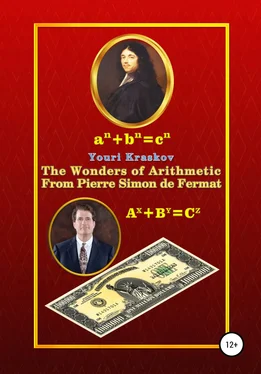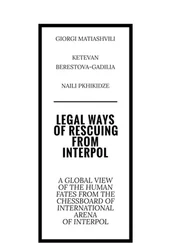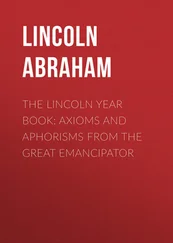Else earlier, 22 years ago, in October 1636 in a letter to Mersenne Fermat reported on the same problem as about his discovery, but in general form i.e. for any polygonal numbers (for example, triangles, squares, pentagons etc.). Subsequently, he even called this theorem golden one. Consequently, the method of descent was discovered by him at the very beginning of his research on arithmetic. By the time of writing the letter-testament, Fermat already knew from Carcavy that the question of foundation the French Academy of Sciences was practically resolved and he needed only to wait for the building to be completed, so it come true his life's dream to become a professional scientist in the rank of academician. Huygens was commissioned to collect materials for the first academic publications. Fermat proposed for them the method of descent discovered by him and the solution of specific arithmetic tasks on its basis.
However, only few people knew that these tasks were very difficult and Fermat understood that if he would publish their solutions, they would not make any impression at all. He already had such an experience and now he has prepared a real surprise. For those who don't appreciate the value of his solution, he would offer to solve another task. This is the Basic theorem of arithmetic, which is of particular importance for all science since without it the whole theory loses its strength. Fermat found a mistake in the proof of Euclid and came to the conclusion that to prove this theorem without applying the descent method is extremely difficult if at all possible. However, now we can also reveal this secret with the help of our opportunities to look into Fermat’s cache with “heretical writings” and return his lost proof to science in the form of the reconstruction presented below.

3.3.2. The Proof of Fermat
So, to prove the Basic theorem of arithmetic we suppose that there exist equal natural numbers A, B consisting of different prime factors:
A=B (1)
where A=pp 1p 2…p n; B=хx 1x 2…x m; n≥1; m≥1
Due to the equality of the numbers A, B each of them is divided into any of the prime numbers p ior x i. Each of the numbers A, B can consist of any set of prime factors including the same ones, but at the same time there is no one p iequal to x iamong them, otherwise they would be in (1) reduced. Now (1) can be represented as:
pQ=xY (2)
where p, x are the minimal primes among p i, x i; Q=A/p; Y=B/x .
Since the factors p and x are different, we agree that p>x; x=p–δ 1then
pQ=(p – δ 1)(Q+δ 2) (3)
where δ 1=p–x; δ 2=Y–Q
From (3) it follows that Qδ 1=(p – δ 1)δ 2or
Qδ 1=xδ 2(4)
Equation (4) is a direct consequence of assumption (1). The right side of this equation explicitly contains the prime factor x. However, on the left side of equation (4) the number δ 1cannot contain the factor x because δ 1= p – x is not divisible by x due to p is a prime. The number Q also does not contain the factor x because by our assumption it consists of factors p iamong which there is not a single equal to x. Thus, there is a factor x on the right in equation (4), but not on the left. Nevertheless, there is no reason to argue that this is impossible because we initially assume the existence of equal numbers with different prime factors.
Then it remains only to admit that if there exist natural numbers A = B composed of different prime factors, then it is necessary that in this case there exist another natural number A 1=Qδ 1and B 1=xδ 2; also equal to each other and made up of different prime factors. Given that δ 1=(p–x)
2=(Y–Q)
A 1= B 1, where A 11
Now we get a situation similar to the one with numbers A, B only with smaller numbers A 1, B 1. Analyzing now (5) in the manner described above we will be forced to admit that there must exist numbers
A 2=B 2, where A 2
1; B 2
Following this path, we will inevitably come to the case when the existence of numbers A k=B k, where A kk-1; B kk-1as a direct consequence of assumption (1) will become impossible. Therefore, our initial assumption (1) is also impossible and thus the theorem is proven. 41
Looking at this very simple and even elementary proof by the descent method naturally a puzzling question arise, how could it happen that for many centuries science not only had not received this proof, but was completely ignorant that it had not any one in general? On the other hand, even being mistaken in this matter i.e. assuming that this theorem was proven by Euclid, how could science ignore it by using the "complex numbers" and thereby dooming itself to destruction from within? And finally, how can one explain that this very simple in essence theorem, on which the all science holds, is not taught at all in a secondary school?
As for the descent method, this proof is one of the simplest examples of its application, which is quite rare due to the wide universality of this method. More often, the application of the descent method requires a great strain of thought to bring a logical chain of reasoning under it. From this point of view, some other special examples of solving problems by this method can be instructive.
3.4.1. A Little Bit of " Sharpness of Mind" for a Very Difficult Task
We will now consider another example of the problem from Fermat's letter-testament, which is formulated there as follows:
There is only one integer square, which increased by two, gives a cube, this square is 25 .
When at the suggestion of Fermat, the best English mathematician of the time John Wallis tried to solve it, he was very vexed and forced to acknowledge he could not do it. For more than two centuries it was believed that Leonard Euler received the solution to this problem, but his proof is based on the use of "complex numbers", while we know these are not numbers at all because they do not obey the Basic theorem of arithmetic. And only at the end of the twentieth century André Weil using the Fermat's triangles method still managed to get a proof [17].
It was a big progress because a purely arithmetic method was used here, however, as applied to this problem, it was clearly dragged the ears. Could Fermat solve this problem easier? We will also extract the answer to this question from the cache, what will allow us to reveal this secret of science in the form of the following reconstruction. So, we have the equation p 3=q 2+2 with the obvious solution p=3, q=5. To prove Fermat's assertion, we suppose that there is another solution P>p=3, Q>q=5, which satisfies the equation
P 3=Q 2+2 (1)
Since it is obvious that Q>P then let Q=P+δ (2)
Substituting (2) in (1) we obtain: P 2(P–1)–2δP–δ 2=2 (3)
Here we need just a little bit of “sharpness of mind” to notice that δ>P otherwise equation (3) is impossible. Indeed, if we make a try δ=P then on the left (3) there will be P 2(P–4)>2 what is not suitable, therefore there must exist a number δ 1=δ–P. Then substituting δ=P+δ 1in (3) we obtain
P 2(P–4)–4δ 1P–δ 1 2=2 (4)
Now we will certainly notice that δ 1>P otherwise, by the same logic as above, on the left (4) we get P 2(P–9)>2 what again does not suitable, then there must exist a number δ 2=δ 1–P and after substituting δ 1=P+δ 2in (4), we obtain P 2(P–9)–6δ 2P–δ 2 2=2 (5)
Here one can no longer doubt that this will continue without end. Indeed, by trying δ i=P each time we get P 2(P−K i)>2. Whatever the number of K ithis equation is impossible because if K i
Читать дальше






![Theresa Cheung - The Dream Dictionary from A to Z [Revised edition] - The Ultimate A–Z to Interpret the Secrets of Your Dreams](/books/692092/theresa-cheung-the-dream-dictionary-from-a-to-z-r-thumb.webp)






